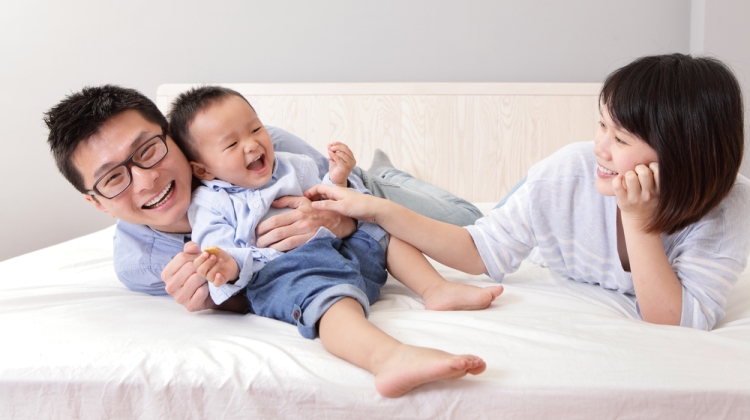


Many parents are concerned with the healthy development of their children. An active child tends to run around, exploring their world with little fear and a whole lot of curiosity. While scrapes, bumps and knocks are part and parcel of growing up, some orthopaedic problems are more severe than others.
Fractures more critical in children
Fractures in children are particularly tricky. As the bones of a child are softer and more flexible, they bend and crack rather than shatter. In addition, growth plates are open and are generally weaker and will break more easily. It is especially important that broken bones in children are treated properly.
In general, fractures in children are treated conservatively. The bones of a child heal faster than an adult’s, and have the special ability to remodel with time. Surgical treatment is reserved for growth plate injuries, fractures associated with neurovascular compromise, open fractures and certain fractures around the hip.
Dr Francis Wong, paediatric orthopaedic surgeon at Mount Elizabeth Hospital emphasises that only experienced surgeons should carry out the protocol of treatment. Clinical assessment of the injured limb is paramount in deciding the management protocol as complications can be disastrous.
Common orthopaedic injuries affecting children
Compared to adults, children injure their upper limbs more often, especially at the elbows. Common injuries include:
Pulled elbow is one of the most common injuries in children between two and ten years old. It is usually sustained when the child’s forearm is pulled (despite with minimal force) to prevent him from falling. This results in a partial dislocation of the joint, resulting in pain and loss of use of the affected limb. Sometimes, the injury is caused when the child loses his balance whilst seated or turning in bed. There is no swelling and the child behaves as per normal, except for an unwillingness to use the affected arm. The injury resolves itself almost miraculously with a proper twist of the forearm.
Supracondylar fracture of the humerus can occur when a child tries to break his fall with an outstretched arm. The fracture occurs just above the elbow joint, with visible displacement and eventual swelling. It normally heals without issue, but it is difficult to achieve stable reduction (realignment) until it is rejoined. A badly displaced supracondylar fracture is sometimes associated with injury to any of the three major nerves about the elbow, as well as compression of the main artery at the elbow.
Dr Wong’s practice is to routinely manipulate and reduce all displaced supracondylar fractures under general anaesthesia in an outpatient setting. Crossed percutaneous pins are inserted through the skin under X-ray guidance and the elbow is further protected with a full cast. The pins are left exposed and can be easily removed in two weeks if the fracture has stabilised. Full elbow movement is usually allowed after two more weeks, and children usually heal well enough to not require postoperative physiotherapy.
Lateral condylar fracture of the humerus occurs in about 10% of lower humerus fractures. It occurs at the lower end of the arm and crosses into the joint. This injury needs even greater care in treatment as it involves both the joint surface of the elbow and growth plate. In most instances, the fracture is displaced.
This is a severe injury which requires surgery and fixation for the best recovery results. The fracture is treated often on an outpatient basis. Percutaneous pins are left exposed and removed in the clinic from the third week.
Growth plate injury is a common elbow injury sustained by falling children. Once diagnosed it is highly critical that realignment must be done, either by manipulation or surgery. This is because the growth plates will continue growing even at the wrong directions, leading to lifelong complications if left uncorrected.
The affected elbow must be put in a full cast at 90 degrees angle, as this is the most stable position for the bone to heal. Regular X-ray checks are advised to monitor the position of the fragments until healing takes place.
We hope this article has provided some insights into some of the common injuries sustained by children. That said, children will be children. With proper guidance and care, and medical attention when required, children can grow up healthy, happy, and still maintain a positive curiosity for their world.